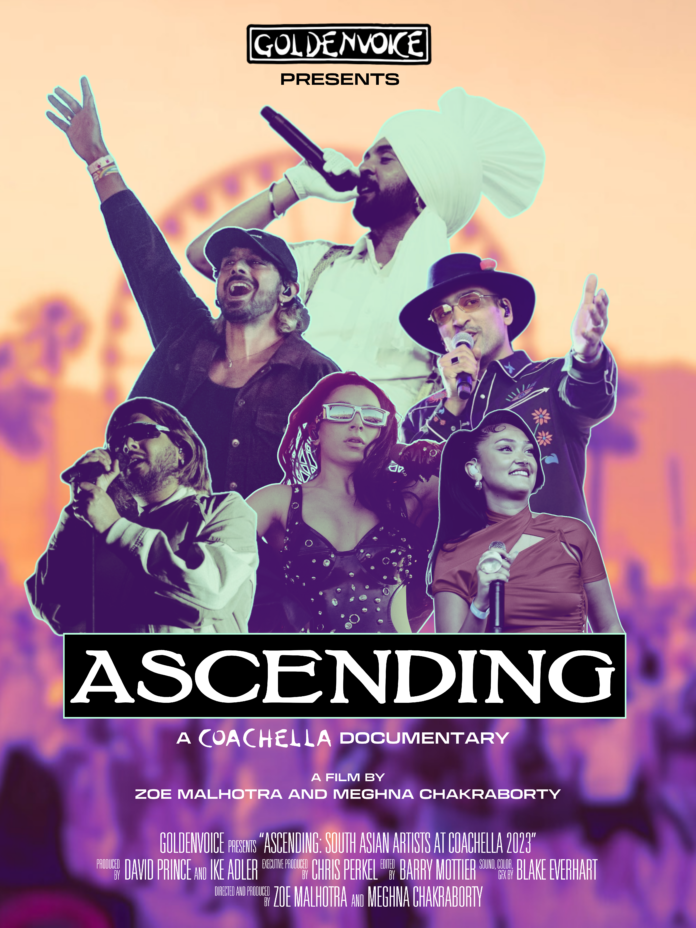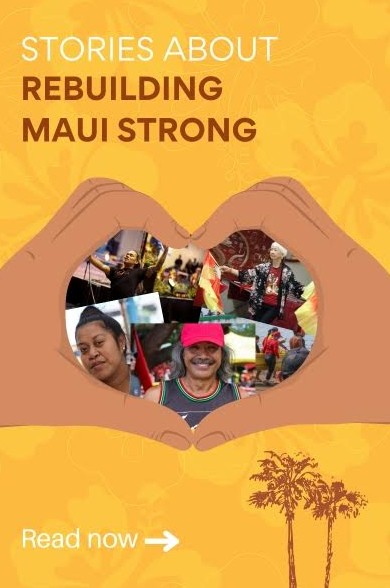When Coachella announced its 2023 lineup a year ago, the Internet celebrated the most international program in the history of the iconic music festival with headliners like K-pop girl group BLACKPINK and Puerto Rican rapper Bad Bunny.
For filmmakers Zoe Malhotra and Meghna Chakraborty and many music lovers in the South Asian community, however, what stood out were six names that many never expected to see: Punjabi singer and actor Diljit Dosanjh, singer-songwriter Charli XCX of Scottish and Gujarati Indian descent, Pakistani singer and author Ali Sethi, British Indian record producer Jai Paul, Bangladeshi American music producer Jai Wolf and British singer-songwriter Joy Crookes of Bangladeshi and Irish descent.
“We were responding to the excitement from our South Asian community and overall multicultural audiences that were super excited about the 2023 lineup having such an international roster of artists,” Chakraborty said. “Having six different South Asian artists has never ever happened before.”
“What was especially exciting was that each artist comes from a different region, they speak a different language and their cultural identities inform their music and artistic expression in different ways, so we were excited about that,” she continued. “We wanted to document the moment.”
And document the moment, they did—in the four months in between the announcement of the lineup and the festival, Malhotra and Chakraborty reached out to the Coachella artists and developed a pitch for a documentary. Just a few weeks before the festival was set to begin, they received the greenlight from Goldenvoice, the festival promoter that organizes Coachella, to create ASCENDING, which premiered on the Coachella YouTube channel on Jan. 16. Its release was timed to coincide with the announcement of the Coachella 2024 lineup, with the video being embedded in the website page itself as well.
“We were really lucky that it just kind of worked out because it was such a short turnaround in terms of time, and when you’re pitching a project to people, it’s a lot of conversations, a lot of, ‘Is this going to work out?’” Malhotra said. “But it was really just an alignment of Coachella was intentionally trying to appeal to a wider global audience, and that was reflected in their lineup, and they also wanted to create content that also reflected that.”
Despite the tight timeline, receiving the news that they could officially move forward with the project even just a few weeks ahead of Coachella turned out to be a blessing for the two filmmakers. “We got their blessing quick enough to turn up able to show up and go there and work on the festival grounds,” Malhotra said. “The most important content was the content we were able to capture while we were there… If this was greenlit after the festival happened, we wouldn’t have been able to capture a lot of the in-the-moment response and ambiance that we got.”
Even after several months and through the video screen, ASCENDING is able to convey the exhilarating atmosphere of being in the crowd at each of these South Asian artists’ sets. Scenes of festival attendees dancing along to Dosanjh hits like “Patiala Peg” and sweeping drone shots of massive crowds for Wolf’s set really captured the feeling of a historic, record-breaking Coachella.
Even for Malhotra and Chakraborty, who spent most of the two-weekend festival filming and interviewing, the energy was infectious. “It was crazy,” Chakraborty said. “As you can see in the doc, a lot of fans were getting emotional and crying, and I think we were, too.”
“We would say, ‘I think these artists’ performances are going to be really meaningful, and the representation is going to be really important to audiences’—and we knew that that was going to happen,” Malhotra added. “But it happened to us, too, just standing there in the crowd. We felt that physically, the importance of what it felt like to see someone from our background on the Coachella stage.”
These moments of living in the moment and connecting with the community were able to take place despite the hectic process of documenting a music festival with eight different stages featuring different artists at different times. On top of the stress of navigating all these different schedules, by the time Malhotra and Chakraborty first stepped onto the Coachella festival grounds, they still didn’t know which interviews they were going to be able to arrange.
“Another challenge was having different levels of access to different artists,” Chakraborty said. ASCENDING features interviews with Crookes, Sethi and Wolf, as well as Dosanjh’s manager Sonali Singh and various attendees and festival organizers. Despite the uncertainty of what material they would be able to obtain, the two filmmakers wanted to ensure that their documentary didn’t privilege certain artists over others.
“In post[-production], Zoe and I really tried to craft this collective story and have it be balanced still and not have it be one artist is dominating the story,” Chakraborty said.
Coming into the creative process, Malhotra said that the duo knew that certain themes would be central to their documentary, which by the nature of it being a short documentary for Coachella’s YouTube channel had to be focused. “There’s so much we could say about this story—this could be extended into a whole feature-length series,” she said. “The way to focus it that felt the most right was to cement everything in that moment in history of [the artists’] performances at Coachella and then the immediate response to it.”
“It all sort of tied back to how momentous it was to have these six artists perform at Coachella, and what a big deal this year’s Coachella lineup was in general,” she continued.
This sense of making history at Coachella 2023 is perfectly encapsulated by the documentary’s title, ASCENDING, an evocative choice that Malhotra and Chakraborty agreed upon for different yet personally meaningful reasons.
“We wanted to have a title that captured this moment but also didn’t tokenize what this moment was,” Malhotra said. “We also wanted it to feel hopeful and exciting, and so that concept of ‘ascending’ came from that feeling of, ‘We’re rising, there’s still a place to go, there’s like a forward momentum.’”
“Also, the musical tie-in of an ascending note or an ascending scale,” she added.
For Chakraborty, “ascending” also resonates for her culturally through her background as an Indian classical dancer. “We do a solo dance debut called an arangetrum,” she said. “The reason why ‘ascend’ has always stayed in my mind is because arangetrum literally translates to ‘to ascend the stage.”
“I’ve always had that in my mind where you get on the stage, but you never get off, and that felt very aligned with this story that we were trying to tell about these artists,” she continued.
More than just the artists themselves, the story they hoped to tell through ASCENDING was one about community: community between the artists and the production crew behind the scenes and the audience and the South Asian diaspora as a whole. “South Asia is not a monolith, and part of our intention of creating this story was highlighting the diversity within South Asia,” Chakraborty said.
“So it’s like the story is more than just South Asian representation,” she concluded. “It’s us really trying to tell a story about how music can transcend.”
Support our June Membership Drive and receive member-only benefits. With less than four days left in our fundraising drive, we are running out of time. We are just 51% of our goal of $10,000 in new donations and monthly and annual donation pledges and 44% of our goal of gaining 25 new recurring donors by the end of the month. We need your help during these challenging times. Please help to ensure quality content in amplifying the voices of the AAPI community.
We are published by the non-profit Asian American Media Inc and supported by our readers along with the Robert Wood Johnson Foundation, AARP, Report for America/GroundTruth Project & Koo and Patricia Yuen of the Yuen Foundation.
You can make your tax-deductible donations here via credit card, debit card, Apple Pay, Google Pay, PayPal and Venmo. Stock donations and donations via DAFs are also welcomed. Contact us at info @ asamnews dot com for more info.




